Step 1: It all starts in Cao Bằng City
Cao Bằng City is the historical and cultural crossroads of the province. Upon your arrival, immerse yourself in the local atmosphere at the
Central Market.
It's an authentic market, unlike the major tourist centers. Here, you'll encounter members of
ethnic minorities, including the
Tày,
Nùng, and
Dao. Look closely, and you can discern the subtle variations in their traditional garments, which silently declare their allegiance to specific sub-ethnic groups.
As often, the market is the ideal place to taste unique culinary specialties of the province, such as the famous
Cao Bang sausage (part of Lạp Sườn Cao Bằn’s success is due to a marinade as secret as it is esoteric) or the equally famous
seven-flavor roasted duck (Vịt quay 7 vị).
After savoring a delicious ant egg cake (a Tay specialty) and before hitting the road for real, climb up to the
Pí Pha Belvedere (
Đồi Pí Pha). A spectacular viewpoint overlooking the unique geography of the region, recognized as the
UNESCO Global Geopark of Non Nước Cao Bằng. Pí Pha offers a unique perspective on Cao Bằng nestled at the bottom of a limestone basin, surrounded on all sides by residual karst peaks.
Mr. Linh's advice: When to go? At sunrise or sunset when the morning mists cling to the summits. It's a grand and poetic photo spot!
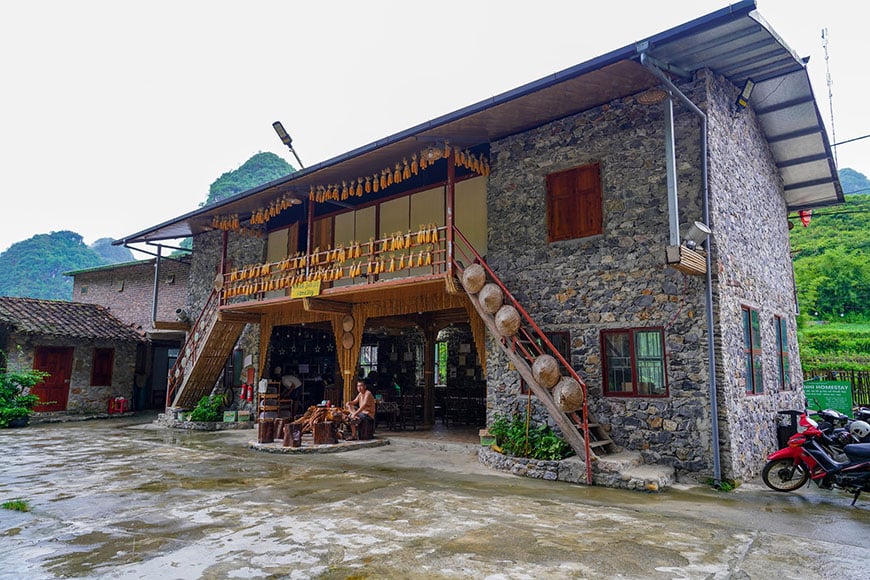 Khuoi Ky stone village is famous for its stone stilt houses | Mr Linh's Adventures
Khuoi Ky stone village is famous for its stone stilt houses | Mr Linh's AdventuresStep 2: The Ban Gioc Loop
It's the most famous itinerary, but we enrich it with stops of our own creation..
Khuổi Ky village
This is our first "off-the-beaten-path" gem! Khuổi Ky is a village of the Tày ethnic group located just before the falls, on the way to the Ngườm Ngao Cave.
Forget wooden stilts. Here, houses over 400 years old are entirely built with blocks of limestone. The walls, over 30 cm thick, were originally designed as defensive fortifications (nhà sàn đá) during the Mac Dynasty era (around 1594-1677).
Did you know? For the Tày, stone is a sacred object, an invisible protector, as it is said that man is born from stone and returns to it in death.
Mr. Linh's advice: Stay in a homestay in one of these stone houses. Here, you'll discover the natural coolness of the stone and the beauty of Then singing (UNESCO heritage) and the Tĩnh lute.
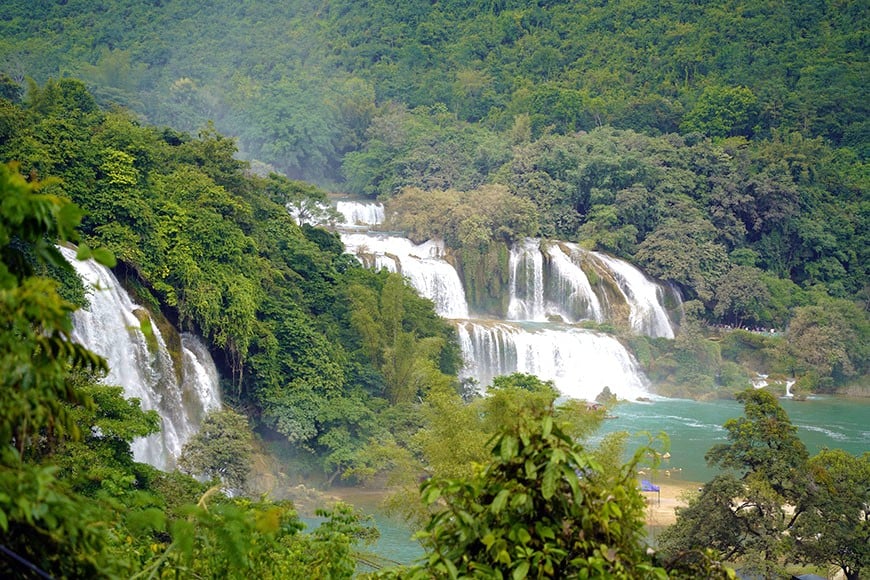 Ban Gioc Waterfall, a enchanting site on the Vietnam–China border in Cao Bằng Province | Mr Linh's Adventures
Ban Gioc Waterfall, a enchanting site on the Vietnam–China border in Cao Bằng Province | Mr Linh's AdventuresBan Gioc/Detian Falls
The
majestic falls are the highlight of the loop. But this site is not just natural; it's a symbol of a shared and sometimes disputed border.
The initial demarcation dates back to the Sino-French Border Treaty of 1887, with the border tracing the course of the Quây Sơn (or Quy Xuân) River. The current division was officially cemented by the 1999 Treaty. Although the frontier runs down the middle of the river, cross-border tourism—with Vietnamese tourists on rafts and Chinese visitors on the opposite bank—represents a recent effort to transform this point of division into a symbol of economic cooperation.
The cascade is known by
two names because it lives a double life: Vietnamese on one side (
Thác Bản Giốc) and Chinese on the other (
Dé Tiān Pù Bù). In Vietnamese, the name poetically means "the waterfall of the village on the slope," while the Chinese version translates more grandly to "the waterfall of heavenly virtue".
Mr. Linh's advice:
Ngườm Ngao Cave is often included in the Ban Gioc itinerary. It is spectacular but less "unique" than Khuổi Ky or Mắt Thần. Similarly, while the
Trúc Lâm Phụng Hoàng Monastery, located just above Ban Gioc Falls, offers a magnificent view, the angle is quite classic (Buddhism and panorama).
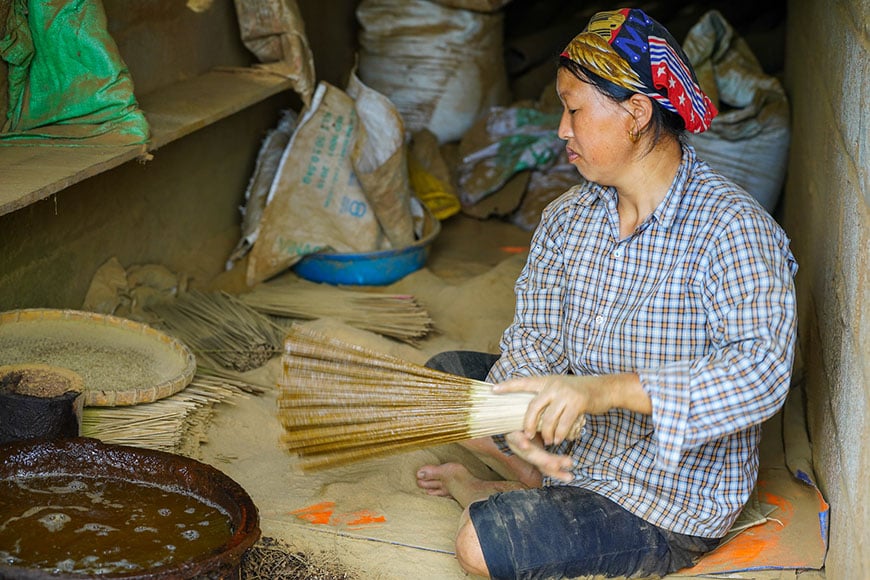 Phia Thap incense village is one of Cao Bằng Province’s seven traditional craft villages | Mr Linh's Adventures
Phia Thap incense village is one of Cao Bằng Province’s seven traditional craft villages | Mr Linh's AdventuresStep 3: History, geology & mysteries
For your last day (or two if you like taking your time), focus on revolutionary history and unexpected karst sites.
Pắc Bó, the cradle of Revolution
Here, in the north of the province, the history of modern Vietnam was rewritten.
In 1941, Hồ Chí Minh returned to Vietnam after 30 years of exile and established his headquarters here. Today, you can still find Lenin Creek and Karl Marx Mountain, names that symbolically pay homage to communist ideology.
Mr. Linh's advice: Visit the Pắc Bó Cave to imagine the ascetic simplicity and determination that guided the early years of the Vietnamese Revolution.
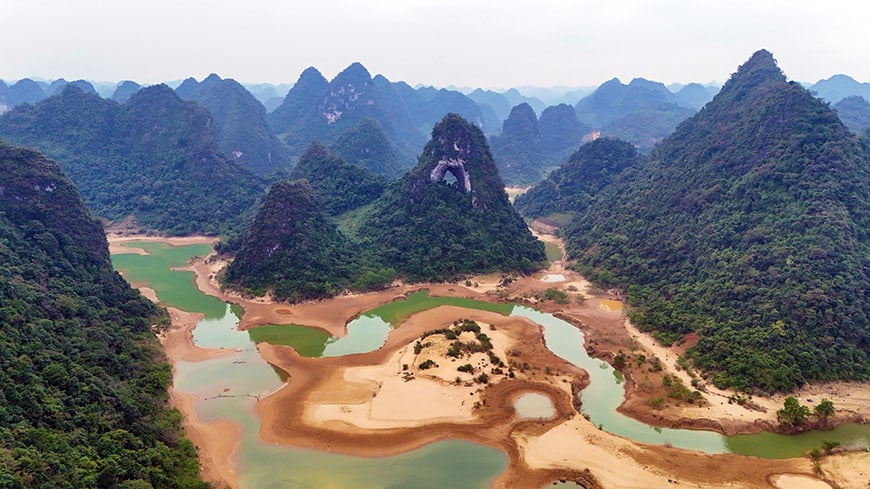 Mat Than Mountain is one of northern Vietnam’s most captivating natural wonders | Mr Linh's Adventures
Mat Than Mountain is one of northern Vietnam’s most captivating natural wonders | Mr Linh's AdventuresThang Hen Lake and the Eye of God
This is where geology becomes mysterious!
Núi Mắt Thần (Mountain of the God's Eye): Sometimes referred to as Nui Thung (Pierced Mountain), this karst formation is spectacular. It is unique because the surrounding plain floods during the rainy season, forming a vast temporary lake. During this period, the mountain with its gaping hole literally seems to emerge from the water, creating an enchanting and almost unreal landscape.
Thang Hen Lake (Hồ Thăng Hen): Adjacent to Mắt Thần, this gem is actually the largest in a network of 36 small lakes interconnected by underground caves. The lake level undergoes dramatic variations in a single day!
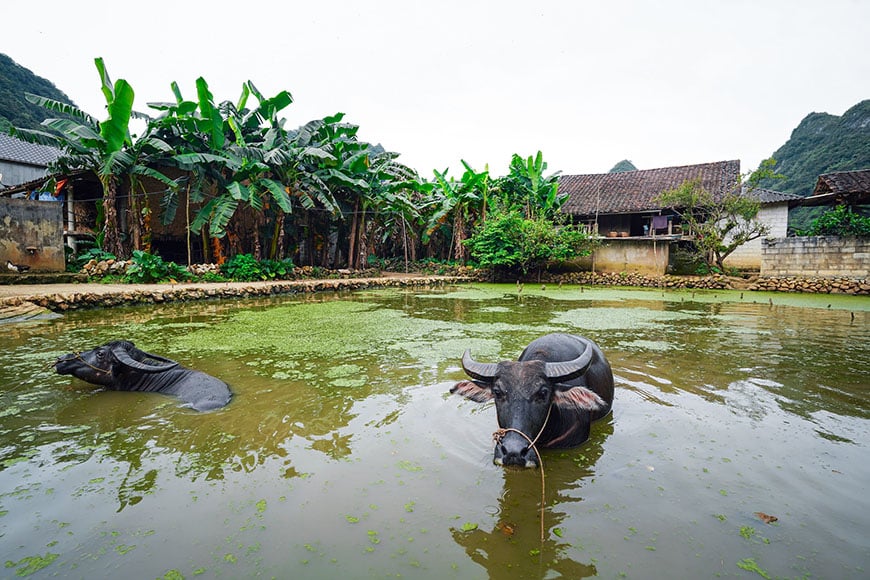 Peacefull local life in Cao Bang | Mr Linh's Adventures
Peacefull local life in Cao Bang | Mr Linh's AdventuresCao Bang - Practical Information
When to go?
The best period is September - October: it's the ideal season for ripe rice paddies (gold color) and a good water flow at Ban Gioc. April - May is also a pleasant season for green paddies. Avoid heavy rains from June to August.
How to get there?
The most convenient way is the sleeper bus from Hanoi (Mỹ Đình Bus Station) in the evening, arriving in Cao Bằng City early in the morning (7 to 9-hour journey).
On-site
Renting a motorbike/scooter is essential for autonomy and to enjoy the views throughout the loop.
Duration of stay
Plan for 3 to 4 full days (but there's nothing stopping you from staying longer and taking a break in
Ba Be National Park...).
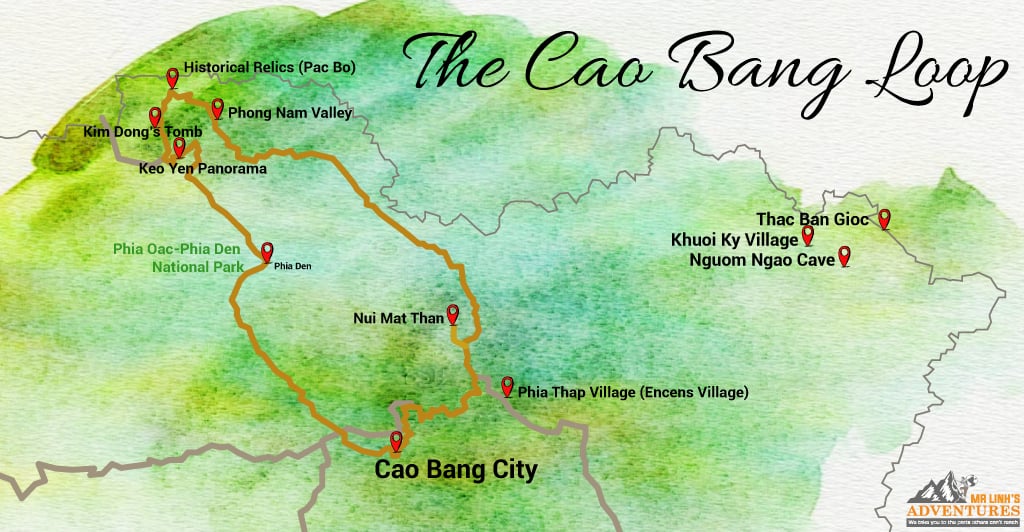
Cao Bằng, the last secret of Northern Vietnam
After traveling these off-the-beaten-path roads and tracing these borders, one thing is certain: Cao Bằng is the province that offers the most comprehensive experience in the entire Northeast. It brings together the geological grandeur of karst, the cultural richness of the Tày and Nùng peoples, and the historical depth of the roots of modern Vietnam.
While Hà Giang captivates with its dizzying passes, Cao Bằng touches the heart with its preserved authenticity and geological mysteries. Away from the bustle, the Cao Bằng loop awaits you. For now, it's the last secret to discover, a place where every turn reveals a new story.
It's time to put on your helmet and embark on the discovery of this extraordinary region!